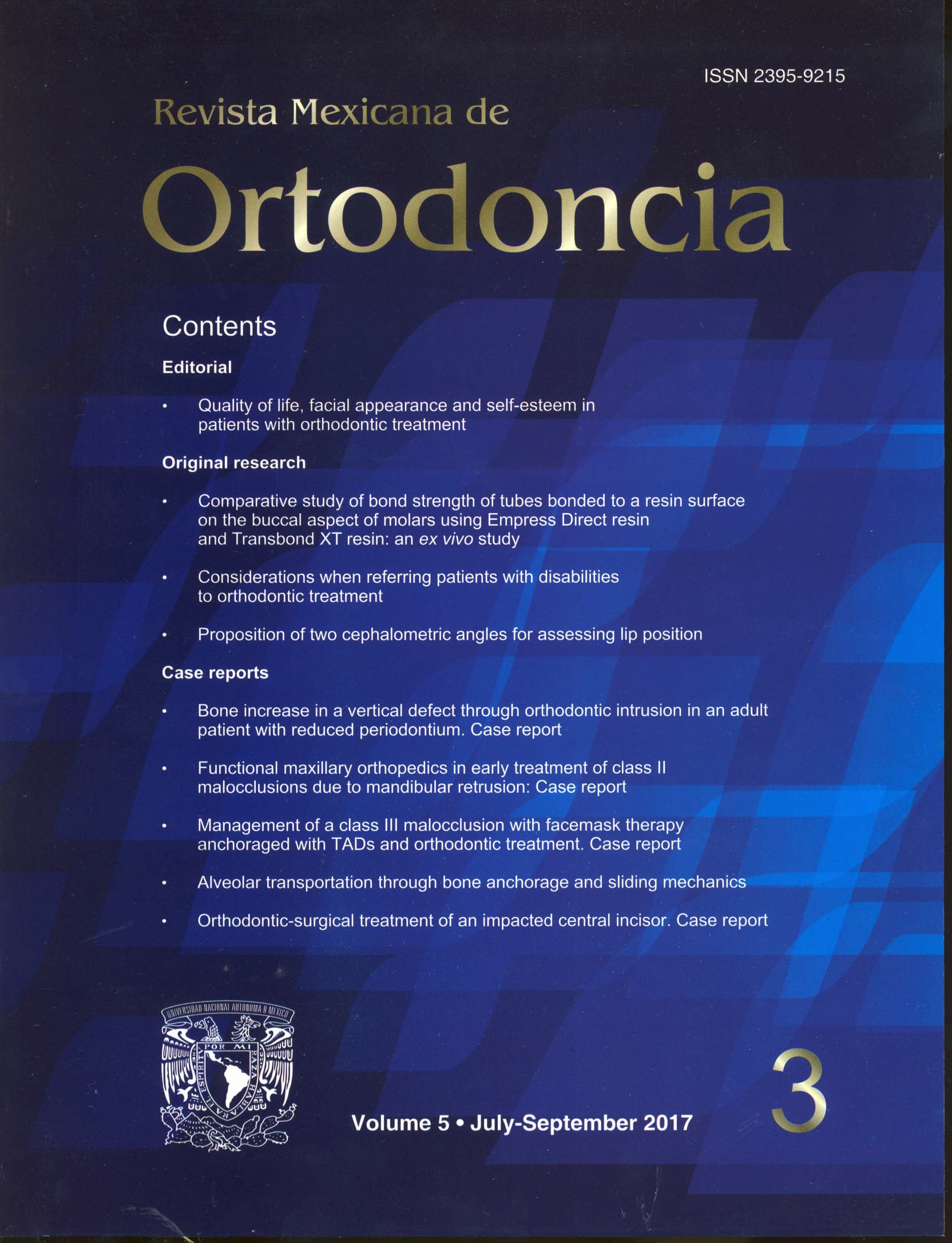Proposition of two cephalometric angles for assessing lip position
Contenido principal del artículo
Resumen
The present study was conducted in order to propose two angles for the assessment of the anteroposterior position of the upper and lower lips, taking as a reference stable bone structures thus avoiding soft tissue reference points that vary according to age such as the nose and chin. Material and methods: 114 lateral headfi lms from skeletal class I, II and III patients were traced. The proposed angles were measured. For the upper lip (LSMx), the palatal plane and the anterior nasal spine-upper stomion plane formed the angle. For the lower lip (LIMd) the angle was formed by the mandibular plane and the pogonion-lower stomion plane. Both angles were compared with the nasolabial (NSL) and the mentolabial angles (MTL) respectively. Results: A statistical t-Student test was conducted. The proposed angles for the upper and lower lip had lower standard deviations from the mean in comparison to similar angles in all three classes, especially skeletal class I: LSMx: 105.5o ± 5.5, LIMd: 88o ± 5.5, NSL: 104.1o ± 11.3 and MTL: 136.9o ± 12.4. The angle proposed for the lower lip showed a smaller standard deviation and a statistically significant difference compared to the mentolabial angle in the ANOVA test (p ˂ 0.05). Conclusions: The proposed angles for assessing lip position indicate that they have smaller deviations from the mean, in addition if there is an increase they show lip protrusion and a decrease indicates lip retrusion.
